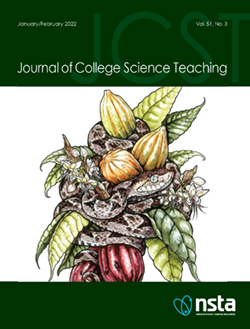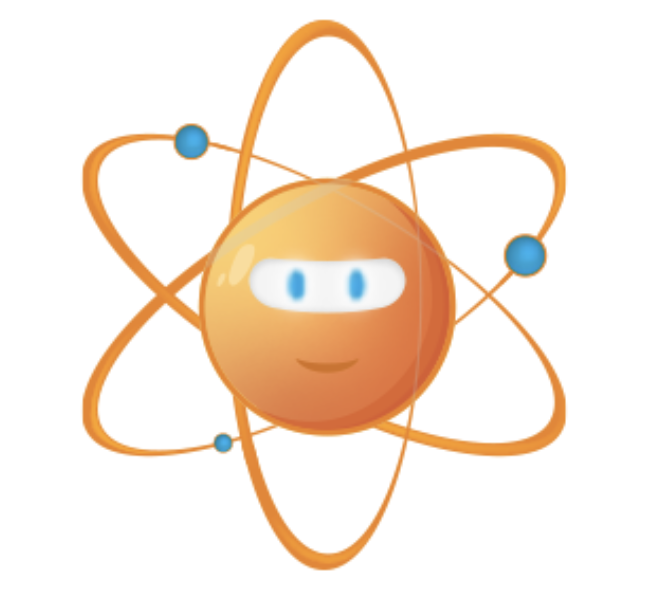Journal of College Science Teaching—January/February 2022

Volume 51, Number 3
This issue includes a special section on the shift to online instruction due to the COVID-19 pandemic.
Journal Article
Is a Framework of Support Enough?
While undergraduate research is known as a high-impact practice, little research has been conducted for the online educational setting. Early research suggests that online students and faculty have similar interest in undergraduate research as their ...
By Emily Faulconer, Brent Terwilliger, Robert Deters, and Kelly George
Journal Article
People’s ability to evaluate scientific research is important to dealing with the COVID-19 pandemic. STEM educators can use the pandemic to frame instruction of scientific literacy and critical-thinking skills. In a small pilot introductory psychol...
By Monica Kim Ngan Thieu, John C. Foo, and Caroline B. Marvin
Journal Article
The unplanned shift to online instruction due to the COVID-19 pandemic challenged many instructors teaching large-enrollment courses to design learning environments that actively engaged all students. We looked at how one instructor used her instruct...
By Susan D. Hester, Jordan M. Elliott, Lindsey K. Navis, L. Tori Hidalgo, Young Ae Kim, Paul Blowers, Lisa K. Elfring, Karie L. Lattimore, and Vicente Talanquer
Journal Article
From Balancing Redox Reactions to Determining Change of Oxidation Numbers
Redox reaction is a core concept in teaching and learning chemistry. This article explores a new method for balancing organic redox reactions that requires the balancing of both atoms and charges. The H+, O, H2O, and e– are used as balanced vehicle...
By Pong Kau Yuen and Cheng Man Diana Lau
Journal Article
Gender Inequities Throughout STEM
Efforts to promote equity and inclusion using evidence-based approaches are vital to correcting long-standing societal inequities that have disadvantaged women and discouraged them from pursuing studies, including in many STEM disciplines. We used 10...
By Alexandru Maries, Kyle Whitcomb, and Chandralekha Singh
Journal Article
Exploring the Effects of a Neglected Area
One of the major challenges of teaching science has been engaging students in discussions of concepts due to lack of perceived relevancy of topics to students’ individual goals and societal issues. Science has been viewed as a set of abstract topic...
By Emma Tribble, Rohan Skariah, Emily Tran, and Ozcan Gulacar
Journal Article
A Flipped Classroom Approach and Digital Learning in an Undergraduate Molecular Biology Course
Teaching modalities such as Flipped Classroom Approach (FCA) are becoming increasingly popular in higher education. FCA requires that instructional content is completed outside the classroom, thus allowing active-learning activities to take place in ...
By Andreas Kakarougkas and Reham Abdellatif
Journal Article
E–6 Preservice Teachers and Elementary Science Teaching
The study assessed the science teaching confidence of preservice teachers in teaching elementary science by addressing two research questions: (1) Did preservice teachers understand the science concepts well enough to be effective in teaching element...
By Mamta Singh
Journal Article
Integrated Concentration in Science
The Integrated Concentration in Science (iCons) 4-year program at the University of Massachusetts Amherst was designed to promote interdisciplinary STEM collaboration in the solution of real-world problems and encourage student independence and inter...
By Stephanie Purington and Martina Nieswandt
Journal Article
Examining Perspectives of Teaching Among Biology Teaching Assistants
Recent reform efforts in postsecondary science teaching have called for shifts in instructional methods to include more evidence-based instructional practices. However, a myriad of factors play a role in whether an instructor adopts these more studen...
By Joshua W. Reid and Emily G. Weigel
Journal Article
As change agents at our university, we sought to facilitate a transition within our STEM college toward more extensive use of evidence-based instructional practices (EBIPs) that promote student-centered learning. We sought a multifaceted approach for...
By Richard E. West, Jamie L. Jensen, Michael Johnson, Jennifer Nielson, Rebecca Sansom, and Geoffrey Wright
Journal Article
Instruction that increases acceptance of evolution is essential to effective biology instruction, but instruction about evolution is not consistently correlated with increased levels of acceptance. Does the pedagogical approach utilized make the diff...
By Clinton Thomas Laidlaw, Seth M. Bybee, Steven Shumway, Thomas Heath Ogden, Steven Peck, and Jamie L. Jensen


